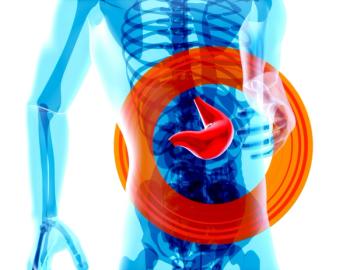A 10-year longitudinal study has found that the cumulative ratio of hepatitis B surface antigen (HBsAg) to hepatitis B virus (HBV) DNA is an independent predictor of disease progression in patients with chronic HBV infection during the immune-tolerant phase. The authors report that the ratio offers superior predictive performance compared with HBsAg or HBV DNA alone, supporting its potential role as a biomarker for identifying patients at increased risk of transitioning to the immune-active phase.
The study demonstrated a non-linear association between the ratio and disease progression risk. When the ratio was below 1.791, the risk decreased sharply as the ratio increased; above this threshold, the risk plateaued. The predictive value, measured by area under the receiver operating characteristic curve, was .85 for the ratio compared with .67 for HBsAg and 0.64 for HBV DNA. Multivariable Cox regression analysis confirmed the ratio as an independent predictor of disease progression, with higher ratios associated with a longer immune-tolerant phase and lower risk.
Early detection of patients at risk, particularly those with lower ratios or those aged 30 years and older, who demonstrated significantly higher progression rates, may support more timely initiation of antiviral therapy. The authors note that earlier treatment decisions could improve long-term outcomes and reduce the clinical and societal burden of chronic HBV.
What You Need To Know
A 10-year study of 127 patients found the cumulative HBsAg/HBV DNA ratio is an independent predictor of chronic HBV disease progression.
Below a ratio of 1.791, progression risk rises sharply; higher ratios are linked to prolonged immune tolerance.
Patients aged ≥30 years showed higher risk, highlighting the need for closer monitoring and timely antiviral intervention.
The study followed 127 untreated immune-tolerant patients with chronic HBV for up to 10 years. An additional 109 patients were retrospectively enrolled in an external validation cohort. Prediction models incorporating the cumulative ratio were externally validated, demonstrating strong performance and potential clinical utility.
These findings align with prior research. A 2023 systematic review and meta-analysis published in Scientific Reports reported that significant histologic changes, including fibrosis and inflammation, were present in 10% and 16% of immune-tolerant patients, respectively. The authors of that study concluded that clinically relevant liver damage is not rare in this population, underscoring the need for improved risk stratification tools such as the cumulative HBsAg/HBV DNA ratio.
Reference
1.Zeng D, Huang Y, Lin S, Kang N, Lin Y, Jiang J, et al. Cumulative Hepatitis B Surface Antigen/Hepatitis B Virus DNA Ratio in Immune-tolerant Hepatitis B Patients: A 10-year Follow-up Study. J Clin Transl Hepatol. Published online: Jul 4, 2025. doi: 10.14218/JCTH.2025.00205
2.Li, Z., Yang, D., Ge, Y. et al. Histologic changes in immune-tolerant patients with chronic hepatitis B: a systematic review and meta-analysis. Sci Rep 13, 469 (2023). https://doi.org/10.1038/s41598-023-27545-z




























































































































































































































































































